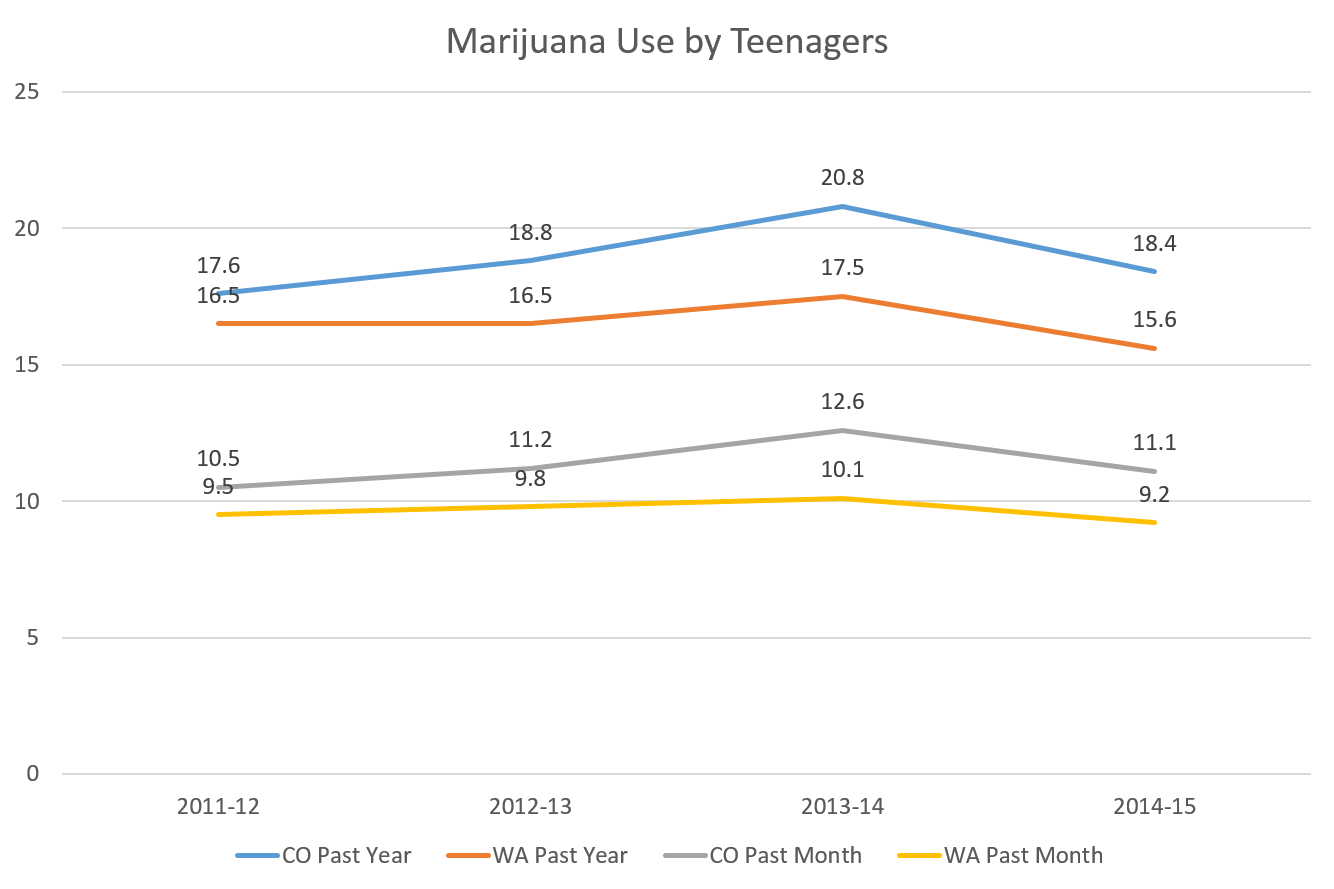Survey Indicates Adolescent Marijuana Use Fell After Colorado Pot Shops Opened
The data still don't show a significant increase in underage consumption after Colorado and Washington legalized.
When the National Survey on Drug Use and Health (NSDUH) indicated that marijuana use by teenagers in Colorado rose after that state legalized marijuana for recreational use in 2012, drug warriors trumpeted the results, even though the change was not statistically significant. They probably will be less inclined to highlight the latest state-level numbers from that survey, which indicate that adolescent cannabis consumption became less common in Colorado during the very period when state-licensed stores began serving recreational customers.
According to NSDUH, the share of 12-to-17-year-olds in Colorado who reported past-month marijuana use, after rising from 11.2 percent in 2012-13 to 12.6 percent in 2013-14, fell to 11.1 percent in 2014-15. The numbers for past-year use followed the same pattern, falling to 18.4 percent in 2014-15 after rising from 18.8 percent in 2012-13 to 20.8 percent in 2013-14. Last year's decline in adolescent use was measured at the same time that use among adults rose.

A few caveats. When you focus on teenagers and break the NSDUH numbers down by state, the samples are quite small, which is why NSDUH pools data for two years at a time. Even then, changes that look significant are often within the margin of sampling error. In this case, the increase in past-month adolescent marijuana use emphasized by pot prohibitionists was not statistically significant, and neither was the subsequent decline in past-month use. But NSDUH does describe last year's decline in past-year use as statistically significant, albeit "at the 0.10 level," which is twice as generous as the usual standard. Another survey with a much bigger sample of Colorado teenagers likewise found that marijuana use did not rise significantly last year.
What about Washington, the other state that approved legalization in 2012? According to NSDUH, past-month use by Washington teenagers rose from 9.8 percent in 2012-13 to 10.1 percent in 2013-14, then fell to 9.2 percent in 2014-15. During the same period, past-year use rose from 16.5 percent to 17.5 percent, then fell to 15.6 percent. None of those changes was statistically signficant.
Even with bigger samples, it would be too early to draw any firm conclusions about how legalization will affect underage cannabis consumption. The most recent NSDUH data come from the first two years when state-licensed recreational retailers were operating in Colorado and Washington. While the liberalization of state marijuana laws during the last two decades evidently did not encourage American teenagers to smoke pot by making it seem cooler, more acceptable, or less dangerous, broad legalization for adults might still drive up adolescent use in particular states through diversion from legal buyers.


Show Comments (54)